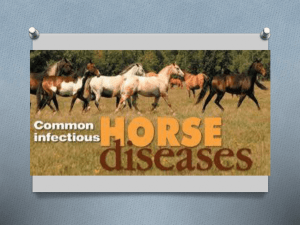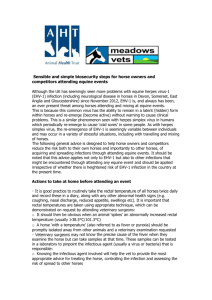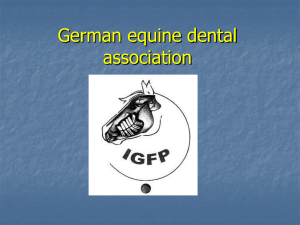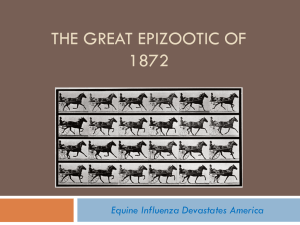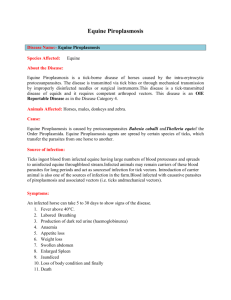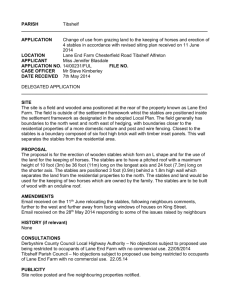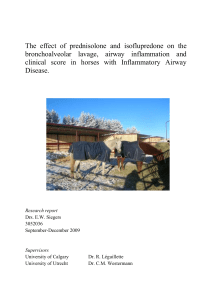Upper Respiratory Tract Infection in Icelandic Horses
advertisement
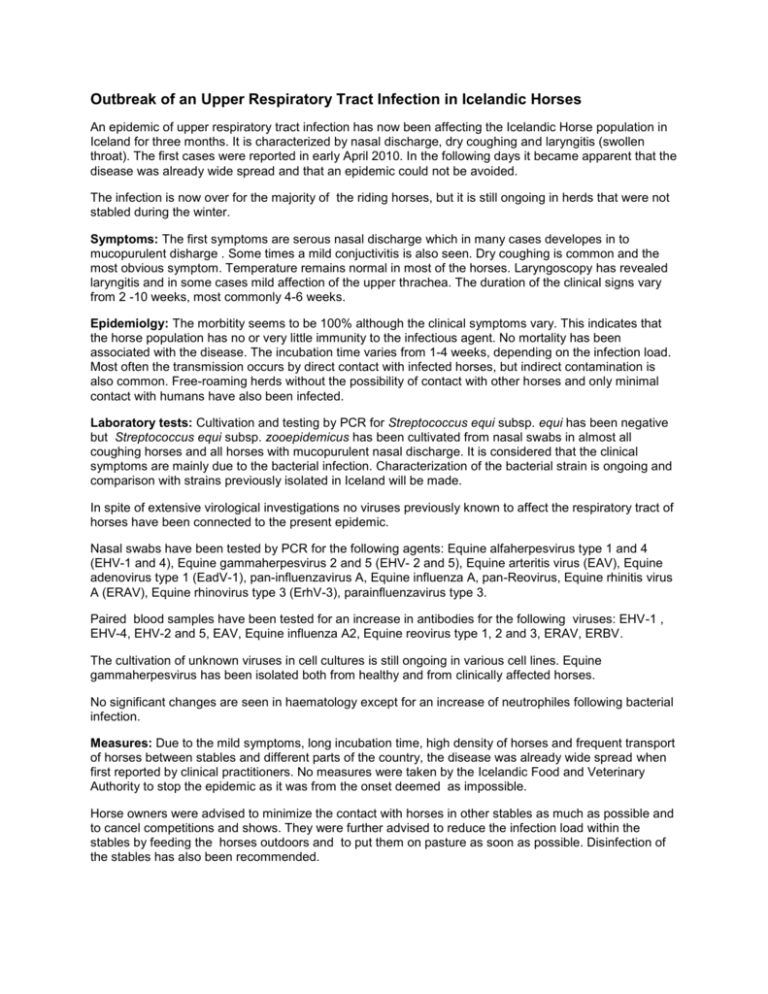
Outbreak of an Upper Respiratory Tract Infection in Icelandic Horses An epidemic of upper respiratory tract infection has now been affecting the Icelandic Horse population in Iceland for three months. It is characterized by nasal discharge, dry coughing and laryngitis (swollen throat). The first cases were reported in early April 2010. In the following days it became apparent that the disease was already wide spread and that an epidemic could not be avoided. The infection is now over for the majority of the riding horses, but it is still ongoing in herds that were not stabled during the winter. Symptoms: The first symptoms are serous nasal discharge which in many cases developes in to mucopurulent disharge . Some times a mild conjuctivitis is also seen. Dry coughing is common and the most obvious symptom. Temperature remains normal in most of the horses. Laryngoscopy has revealed laryngitis and in some cases mild affection of the upper thrachea. The duration of the clinical signs vary from 2 -10 weeks, most commonly 4-6 weeks. Epidemiolgy: The morbitity seems to be 100% although the clinical symptoms vary. This indicates that the horse population has no or very little immunity to the infectious agent. No mortality has been associated with the disease. The incubation time varies from 1-4 weeks, depending on the infection load. Most often the transmission occurs by direct contact with infected horses, but indirect contamination is also common. Free-roaming herds without the possibility of contact with other horses and only minimal contact with humans have also been infected. Laboratory tests: Cultivation and testing by PCR for Streptococcus equi subsp. equi has been negative but Streptococcus equi subsp. zooepidemicus has been cultivated from nasal swabs in almost all coughing horses and all horses with mucopurulent nasal discharge. It is considered that the clinical symptoms are mainly due to the bacterial infection. Characterization of the bacterial strain is ongoing and comparison with strains previously isolated in Iceland will be made. In spite of extensive virological investigations no viruses previously known to affect the respiratory tract of horses have been connected to the present epidemic. Nasal swabs have been tested by PCR for the following agents: Equine alfaherpesvirus type 1 and 4 (EHV-1 and 4), Equine gammaherpesvirus 2 and 5 (EHV- 2 and 5), Equine arteritis virus (EAV), Equine adenovirus type 1 (EadV-1), pan-influenzavirus A, Equine influenza A, pan-Reovirus, Equine rhinitis virus A (ERAV), Equine rhinovirus type 3 (ErhV-3), parainfluenzavirus type 3. Paired blood samples have been tested for an increase in antibodies for the following viruses: EHV-1 , EHV-4, EHV-2 and 5, EAV, Equine influenza A2, Equine reovirus type 1, 2 and 3, ERAV, ERBV. The cultivation of unknown viruses in cell cultures is still ongoing in various cell lines. Equine gammaherpesvirus has been isolated both from healthy and from clinically affected horses. No significant changes are seen in haematology except for an increase of neutrophiles following bacterial infection. Measures: Due to the mild symptoms, long incubation time, high density of horses and frequent transport of horses between stables and different parts of the country, the disease was already wide spread when first reported by clinical practitioners. No measures were taken by the Icelandic Food and Veterinary Authority to stop the epidemic as it was from the onset deemed as impossible. Horse owners were advised to minimize the contact with horses in other stables as much as possible and to cancel competitions and shows. They were further advised to reduce the infection load within the stables by feeding the horses outdoors and to put them on pasture as soon as possible. Disinfection of the stables has also been recommended. Export of horses was stopped in the beginning of May as the District Veterinary Officer in charge of export certification was no longer able to distinquish between infected and uninfected stables and herds. That decision will be reevaluated in August. Conclusion: From the beginning, the disease was characterized as a mild infection of the upper respiratory tract although it has turned out to be more prolonged than expected. It has paralyzed the whole horse industry for almost three months and caused a serious economical problems. There have, however, only been few examples of complications that can be related to the disease and the horses generally gain full recovery. Equestrian activity are now resuming under the supervision of the Icelandic Food and Veterinary Authority.


